We continue our new series of a dozen postcards with a theme, especially for Postcard Friendship Friday. Last Friday we had 12 vintage postcards of boy stars, and now of course the floor is to the girls.
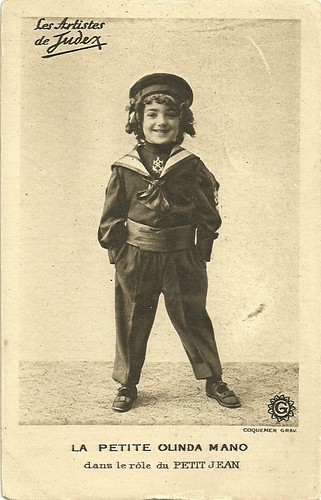
French postcard by Coquemer Gravures, Paris. Photo: Gaumont. Still for La nouvelle mission de Judex (Louis Feuillade 1917-1918).
Olinda Mano (1911-1962) was a child actress in the French silent crime serials by Louis Feuillade. Here as the boy Petit Jean.
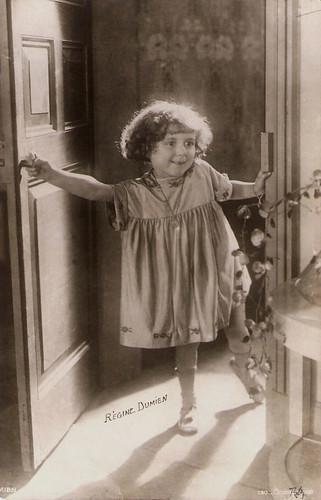
French postcard by Cinémagazine-Edition, no. 130.
Sweet 'little angel' Régine Dumien (1914-1979) was a popular child star of the French silent cinema of the early 1920s.
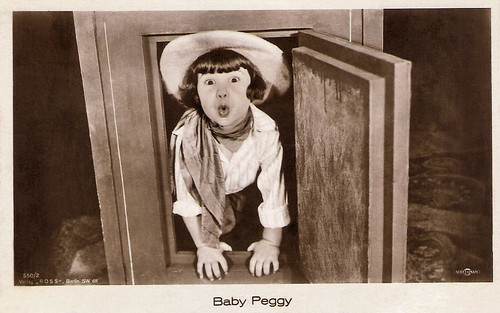
German postcard by Ross Verlag, Berlin, no. 550/2, 1919-1924. Photo: Unifilman.
Diana Serra Cary (1918), best known as Baby Peggy, was one of the three major American child stars of the Hollywood silent movie era along with Jackie Coogan and Baby Marie.
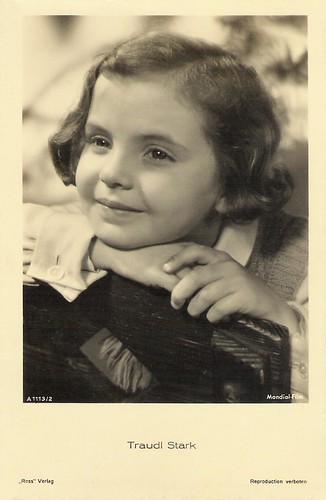
German postcard by Ross Verlag, no. A 1113/2, 1937-1938. Photo: Mondial-Film.
Austrian child actress Traudl Stark (1930) was the Shirley Temple of the German cinema. Between 1935 and 1940 she made a dozen popular films in Austria.
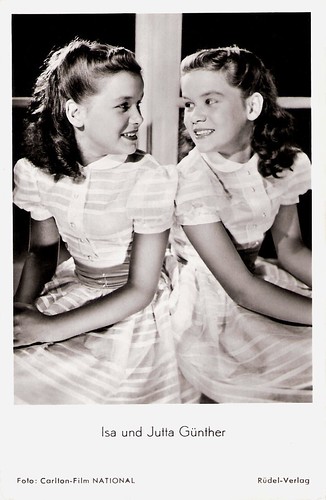
German postcard by Rüdel-Verlag, Hamburg-Bergedorf, no. 533. Photo: Carlton - Film National. Publicity still for Das Doppelte Lottchen/Two Times Lotte (Josef von Baky, 1950).
German twin sisters Isa and Jutta Günther (1938) are former child actresses. In 1950 they were a huge success in the Erich Kästner adaptation Das Doppelte Lottchen/Two Times Lotte. Several more light entertainment films with the twins followed during the 1950s.

German postcard by Rüdel-Verlag, Hamburg-Bergedorf, no. 395. Photo: Lilo / FONO / Allianz-Film.
Afro-German actress Toxi (1946) starred as a child in a successful drama about racism. As a young adult, she appeared under her real name Elfi Fiegert in a few more films and on TV.
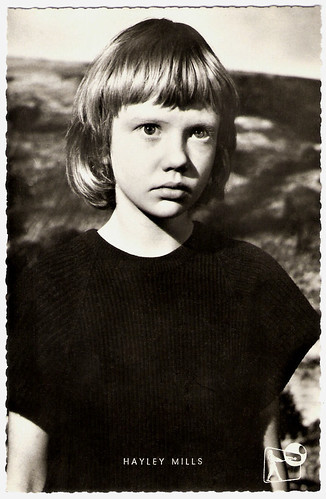
German postcard by Film und Bild, Berlin-Charlottenburg, no. A 1799. Photo: J. Arthur Rank Film.
English actress Hayley Mills (1946) began her acting career as a popular child star and was hailed as a promising newcomer for Tiger Bay (1959), and Pollyanna (1960). During the late 1960s she played in more mature roles. Although she has not maintained the box office success she experienced as a child actress, she has always continued to make films.
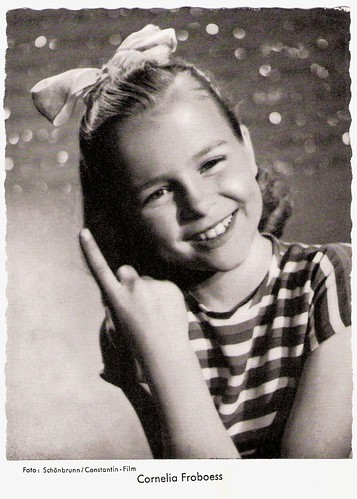
German postcard by WS-Druck, Wanne-Eickel. Photo: Schönbrunn/Constantin-Film.
Conny Froboess (1943) was a teen idol in the late 1950s and early 1960s and would later as Cornelia Froboess become a respected stage actress.
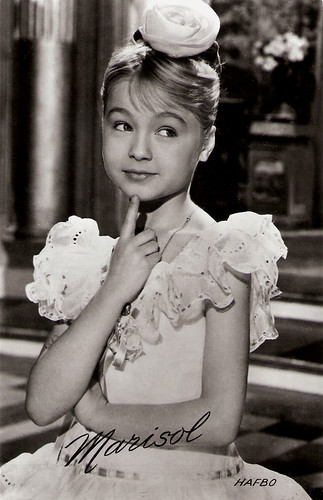
Dutch postcard by Takken, Utrecht, no. 5220. Photo: Hafbo.
Marisol (1948) was a Spanish child star in the sixties. When she became an adult she stayed a popular actress and singer under her real name, Pepa Flores.
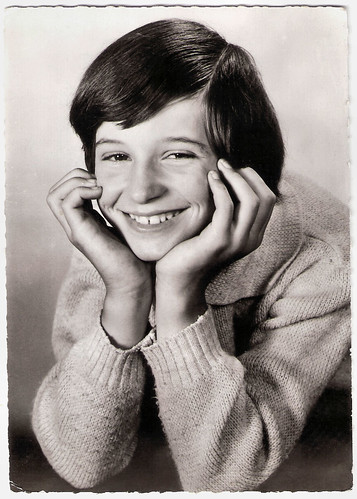
French card. Photo: René Mansat. Publicity still for Zazie dans le métro/Zazie in the Metro (1960).
Catherine Demongeot (1950) made her film debut in the lead role of Zazie dans le metro/Zazie in the Metro (Louis Malle, 1960), based on the novel by Raymond Queneau. She only made two more films. Later on, Demongeot went on to become a teacher.
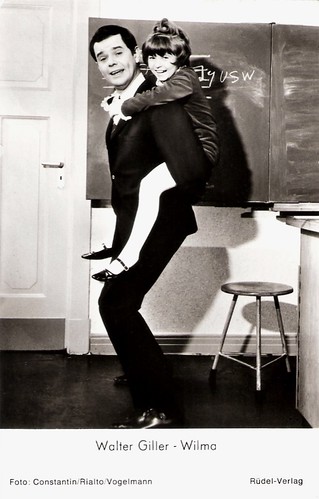
German postcard by Rüdel-Verlag, Hamburg, no. 5009, 1969. Photo: Constantin / Rialto / Vogelmann. Publicity still for Klassenkeile/Spanking at School (Franz Josef Gottlieb, 1969) with Walter Giller and Wilma.
In the late 1960s and the early 1970s, sweet little Wilma (1957) was a popular Dutch child star. At 11, she had hits in both the Netherlands and Germany and also appeared in some Schlager films.
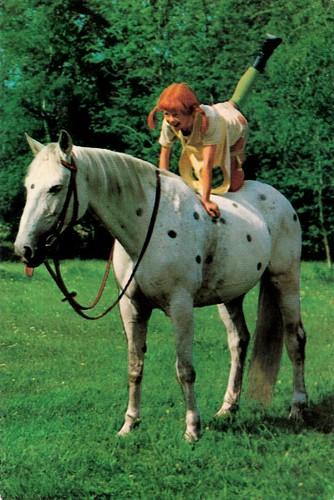
Dutch postcard by Semic International, 1971. Photo: publicity still for Pippi Langstrump/Pippi Longstocking (Olle Hellbom, 1969) starring Inger Nilsson as Pippi Langstrump.
Based on the books by Astrid Lindgren, a hugely popular Pippi Langstrump (Pippi Longstocking) television series was created in Sweden in 1968. Inger Nilsson (1959) gave a confident oddball performance as Pippi. The series, directed by Olle Hellbom, was re-edited as three feature films for the cinema: Pippi Långstrump/Pippi Longstocking (1969), Pippi går ombord/Pippi Goes on Board (1969) and Här kommer Pippi Långstrump/Here Comes Pippi Longstocking (1973). Another two feature film spin-offs were also shown in the cinemas: Pippi Långstrump på de sju haven/Pippi in the South Seas (1970) and På rymmen med Pippi Långstrump/Pippi on the Run (1970). They became weekend television staples throughout the 1970s and 1980s.
This is a post for Postcard Friendship Friday, hosted by Beth at the The Best Hearts are Crunchy. You can visit her by clicking on the button below.


French postcard by Coquemer Gravures, Paris. Photo: Gaumont. Still for La nouvelle mission de Judex (Louis Feuillade 1917-1918).
Olinda Mano (1911-1962) was a child actress in the French silent crime serials by Louis Feuillade. Here as the boy Petit Jean.

French postcard by Cinémagazine-Edition, no. 130.
Sweet 'little angel' Régine Dumien (1914-1979) was a popular child star of the French silent cinema of the early 1920s.

German postcard by Ross Verlag, Berlin, no. 550/2, 1919-1924. Photo: Unifilman.
Diana Serra Cary (1918), best known as Baby Peggy, was one of the three major American child stars of the Hollywood silent movie era along with Jackie Coogan and Baby Marie.

German postcard by Ross Verlag, no. A 1113/2, 1937-1938. Photo: Mondial-Film.
Austrian child actress Traudl Stark (1930) was the Shirley Temple of the German cinema. Between 1935 and 1940 she made a dozen popular films in Austria.

German postcard by Rüdel-Verlag, Hamburg-Bergedorf, no. 533. Photo: Carlton - Film National. Publicity still for Das Doppelte Lottchen/Two Times Lotte (Josef von Baky, 1950).
German twin sisters Isa and Jutta Günther (1938) are former child actresses. In 1950 they were a huge success in the Erich Kästner adaptation Das Doppelte Lottchen/Two Times Lotte. Several more light entertainment films with the twins followed during the 1950s.

German postcard by Rüdel-Verlag, Hamburg-Bergedorf, no. 395. Photo: Lilo / FONO / Allianz-Film.
Afro-German actress Toxi (1946) starred as a child in a successful drama about racism. As a young adult, she appeared under her real name Elfi Fiegert in a few more films and on TV.

German postcard by Film und Bild, Berlin-Charlottenburg, no. A 1799. Photo: J. Arthur Rank Film.
English actress Hayley Mills (1946) began her acting career as a popular child star and was hailed as a promising newcomer for Tiger Bay (1959), and Pollyanna (1960). During the late 1960s she played in more mature roles. Although she has not maintained the box office success she experienced as a child actress, she has always continued to make films.

German postcard by WS-Druck, Wanne-Eickel. Photo: Schönbrunn/Constantin-Film.
Conny Froboess (1943) was a teen idol in the late 1950s and early 1960s and would later as Cornelia Froboess become a respected stage actress.

Dutch postcard by Takken, Utrecht, no. 5220. Photo: Hafbo.
Marisol (1948) was a Spanish child star in the sixties. When she became an adult she stayed a popular actress and singer under her real name, Pepa Flores.

French card. Photo: René Mansat. Publicity still for Zazie dans le métro/Zazie in the Metro (1960).
Catherine Demongeot (1950) made her film debut in the lead role of Zazie dans le metro/Zazie in the Metro (Louis Malle, 1960), based on the novel by Raymond Queneau. She only made two more films. Later on, Demongeot went on to become a teacher.

German postcard by Rüdel-Verlag, Hamburg, no. 5009, 1969. Photo: Constantin / Rialto / Vogelmann. Publicity still for Klassenkeile/Spanking at School (Franz Josef Gottlieb, 1969) with Walter Giller and Wilma.
In the late 1960s and the early 1970s, sweet little Wilma (1957) was a popular Dutch child star. At 11, she had hits in both the Netherlands and Germany and also appeared in some Schlager films.

Dutch postcard by Semic International, 1971. Photo: publicity still for Pippi Langstrump/Pippi Longstocking (Olle Hellbom, 1969) starring Inger Nilsson as Pippi Langstrump.
Based on the books by Astrid Lindgren, a hugely popular Pippi Langstrump (Pippi Longstocking) television series was created in Sweden in 1968. Inger Nilsson (1959) gave a confident oddball performance as Pippi. The series, directed by Olle Hellbom, was re-edited as three feature films for the cinema: Pippi Långstrump/Pippi Longstocking (1969), Pippi går ombord/Pippi Goes on Board (1969) and Här kommer Pippi Långstrump/Here Comes Pippi Longstocking (1973). Another two feature film spin-offs were also shown in the cinemas: Pippi Långstrump på de sju haven/Pippi in the South Seas (1970) and På rymmen med Pippi Långstrump/Pippi on the Run (1970). They became weekend television staples throughout the 1970s and 1980s.
This is a post for Postcard Friendship Friday, hosted by Beth at the The Best Hearts are Crunchy. You can visit her by clicking on the button below.

No comments:
Post a Comment